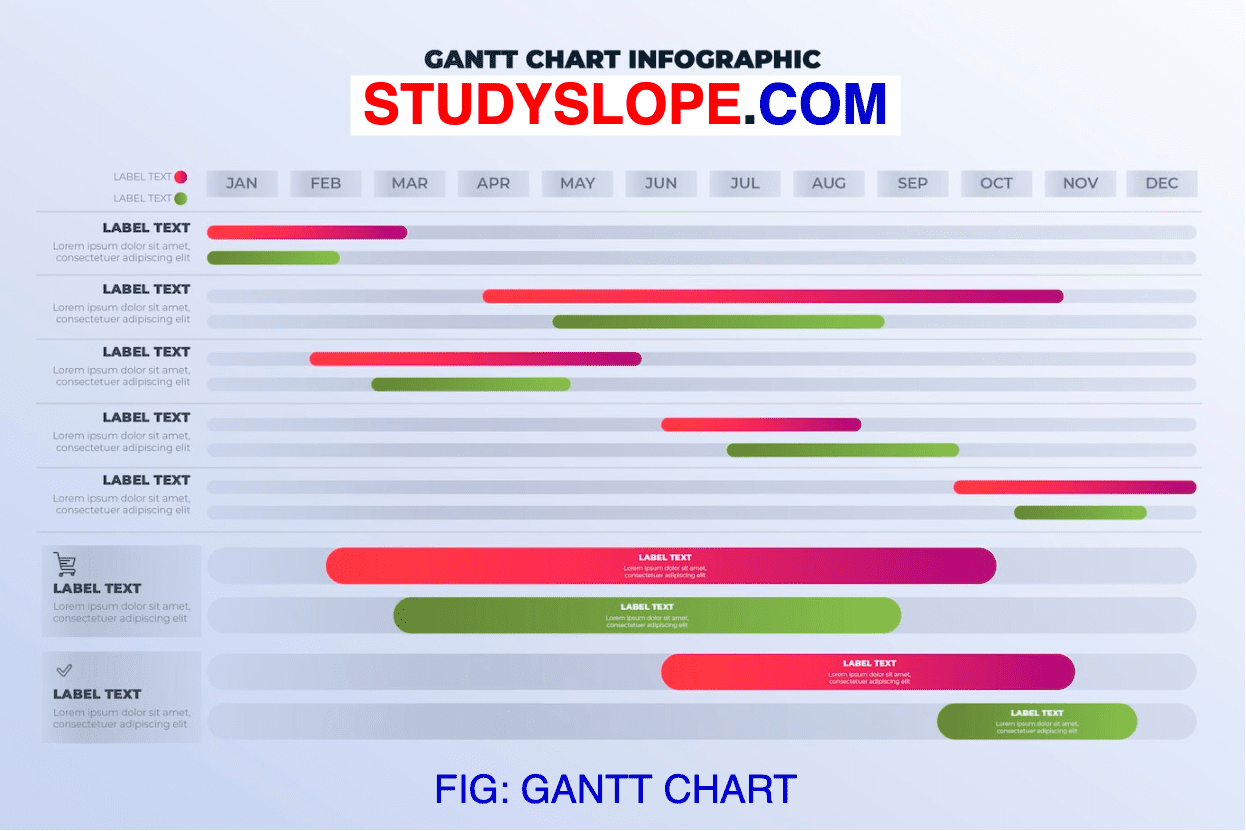What is a Gantt Chart in project management? A Gantt chart is a horizontal bar chart that is used in project management to visually describe a project plan across time. Gantt charts are commonly used in the software known as Microsoft Project. Modern Gantt charts display the schedule, the status, and the specifics of the employer to whom the task is being assigned.
Overview of Gantt Chart
Henry Laurence, an engineer, and business consultant is credited with creating the gantt chart. It is difficult to juggle all the balls at once in a game of juggling balls. Project management is like juggling balls in that regard. The project manager of a project must balance several tasks, personnel, clients, projects, etc. Missing a task’s deadline disrupts a company’s planning and working processes in its entirety. Software is introduced to address risky management, giving a visual depiction of project schedules and details like a project’s deadline and a list of the workers working on it. Gantt chart software performs this type of visual representation of project schedules.
The Gantt chart software can be used by regular individuals to plan and organise their business activities. The visual portrayal of tasks versus time is also the Gantt chart’s central idea. A Gantt chart graphically displays information such as task assignment, who assigned the task, who received the task, and the activities required to finish a project. The use of Gantt charts is not difficult. They are adaptable tools for project managers since they are simple to build, use, and track the job.
The project manager’s inputs are used by the Gantt chart to update the project’s progress. The Gantt chart software suggested timeframe is particularly helpful for planning and scheduling a project. Additionally, it uses numerous graphical representations to serve as a reminder of a project’s deadline. The programme can be used by managers and personnel to track the project’s development. The thorough input can offer notification and the likelihood of issues in the poor management of a project schedule, according to the input Gantt chart. There are various Gantt chart tool kinds available.
Why is a Gantt Chart important?
A Gantt chart represents the completion of each job in a project by using deadlines. These timelines demonstrate how the tasks are related to one another. Gantt charts are important because they show the activities and progress of a project.
Gantt charts show how work on a job may begin only when a related task has been completed. Such data assists managers in understanding project obstacles and making key choices regarding the best approach to bring a project ahead.
Key Elements of a Gantt Chart
The key elements of a Gantt Chart are as follows:
1. Dates
2. Tasks
3. Bars
4. Milestones
5. Arrows
6. Taskbars
7. Vertical line marker
8. Task Id
9. Resources
Advantages of Gantt Chart
The Advantages of the Gantt chart are as follows:
- Its purpose is to reflect the Project’s Activity schedules.
- It is simple to visually express tasks, subtasks, milestones, and projects on a graph.
- Dates and time frames are clearly visible.
- Viewing the Plans by Day, Week, Month, Quarter, and Year is beneficial.
- Effective Team Management and Time Management are facilitated.
- It is simple to combine all subtasks into one major task.
- The Team Members and their accountable duties are also shown.
- On stacked bars, tasks in progress and unfinished business are easily visible.
- Helps managers to communicate with teams more easily.
Disadvantages of Gantt Charts
Here are some of the disadvantages of Gantt charts:
- Increase the amount of work that must be done to create and manage the chart.
- Chart maintenance requires a lot of time and effort.
- In a single view of a Gantt chart, it is not possible to see all the tasks.
- To view the remaining things, you will need to scroll and click on additional buttons.
- Stacks just represent the time; it does not indicate the number of hours worked.
- It is difficult to properly align the jobs from one part to another. It is also difficult to accurately calculate the aggregates.
Applications of Gantt Chart
The use of a this chart is practically beneficial in every sector. Every business has its own method of planning and organising the work it does. The primary applications are in the fields of software engineering and business planning.
- Construction.
- Consulting firms and organisations.
- Marketing companies.
- Designing and developing schedule templates for a project.
- Utilized throughout the production phase to communicate the schedule for when a product will be ready to service its resources.
- Widely used in the process of planning software development.

